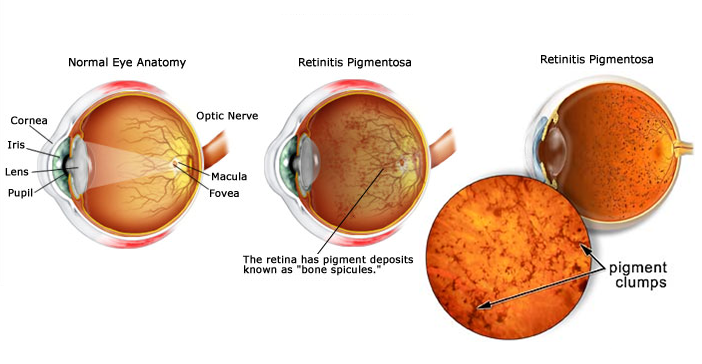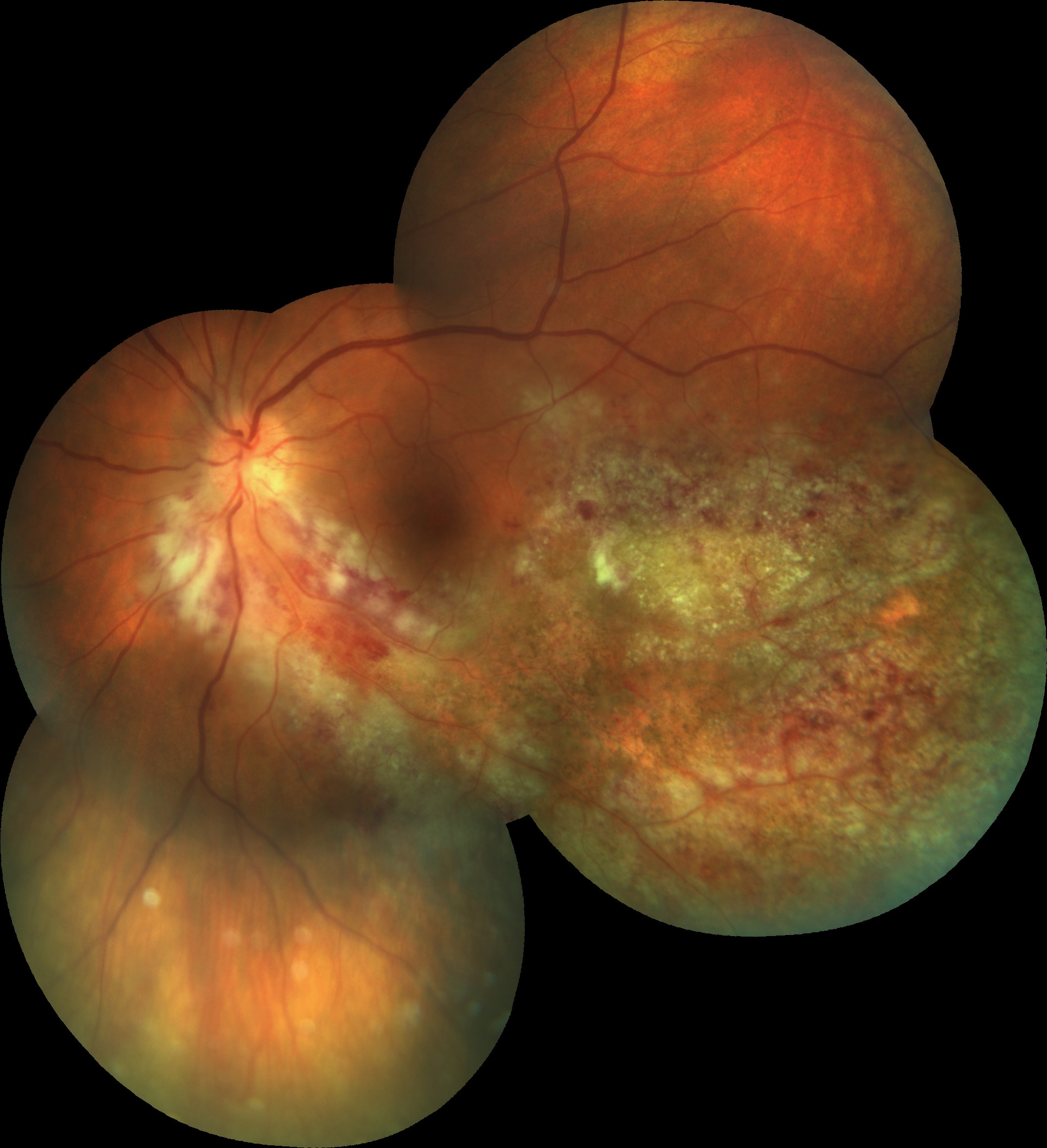

A defect in cGMP-phosphodiesterase, which leads to a toxic level of cyclic guanosine monophosphate, has also been documented. In mice with homozygous recessive mutation for retinal degeneration, rod photoreceptors stop developing and undergo degeneration before cellular maturation completes. In the rat, retinal degeneration caused by the failure of retinal pigment epithelium to phagocytose the shed rod outer segment discs results in the accumulation of rod outer segment debris.

The pathophysiology of RP has been studied in several animal models. Inclusion bodies and/or perinuclear cytoplasmic membranous swirls were found in three cases. Another review described histopathologic findings in 10 patients with autosomal dominant RP, including poorly organized, shortened, or absent outer segments with shortened inner segments. These changes were thought to be a reactive response to photoreceptor damage since the RPE appeared relatively normal morphologically in areas of early photoreceptor involvement. Two types of pigmented cells were found invading the retina: typical RPE cells that were migrating away from the retinal pigment epithelial layer, and macrophage-like cells that contained melanin.


Pathologic findings of an enucleated eye in a patient with autosomal recessive RP showed that the rod and cone outer segments were shortened and disorganized in the patient’s best field of vision, while in the area of visual loss there was a total loss of outer segments and a decrease in number of photoreceptors. Histopathologic studies suggest that RP results from a primary defect in the rod and cone photoreceptors. Association with RPE65 is important as there is now effective gene therapy available for these patients. There are many genes associated with RP for which a patient can undergo genetic testing. RP may also be associated with certain systemic disorders which are usually autosomal recessive. Many cases are due to a mutation of the rhodopsin gene. RP may occur as an isolated sporadic disorder or be inherited as autosomal dominant, autosomal recessive, or X-linked. There are no known risk factors for RP other than genetic predisposition. However, the final common pathway appears to be photoreceptor cell death by apoptosis (rods followed by cones). Since RP is a collection of many different genetic disorders, the etiology is quite variable. The disorder is actually a dystrophy or genetically determined degeneration and not an inflammatory disorder. The term retinitis pigmentosa (RP) is semantically inaccurate in that inflammation (implied by the suffix -itis) is not a prominent part of the pathophysiology of the condition. This article focuses on typical RP with a brief mention of rare but treatable types of RP. RP may be seen in isolation (typical RP) or in association with systemic disease. Visual impairment usually manifests as night blindness and progressive visual field loss. Retinitis pigmentosa (RP) is a clinically and genetically heterogeneous group of inherited retinal disorders characterized by diffuse progressive dysfunction of predominantly rod photoreceptors with subsequent degeneration of cone photoreceptors and the retinal pigment epithelium (RPE).


 0 kommentar(er)
0 kommentar(er)
